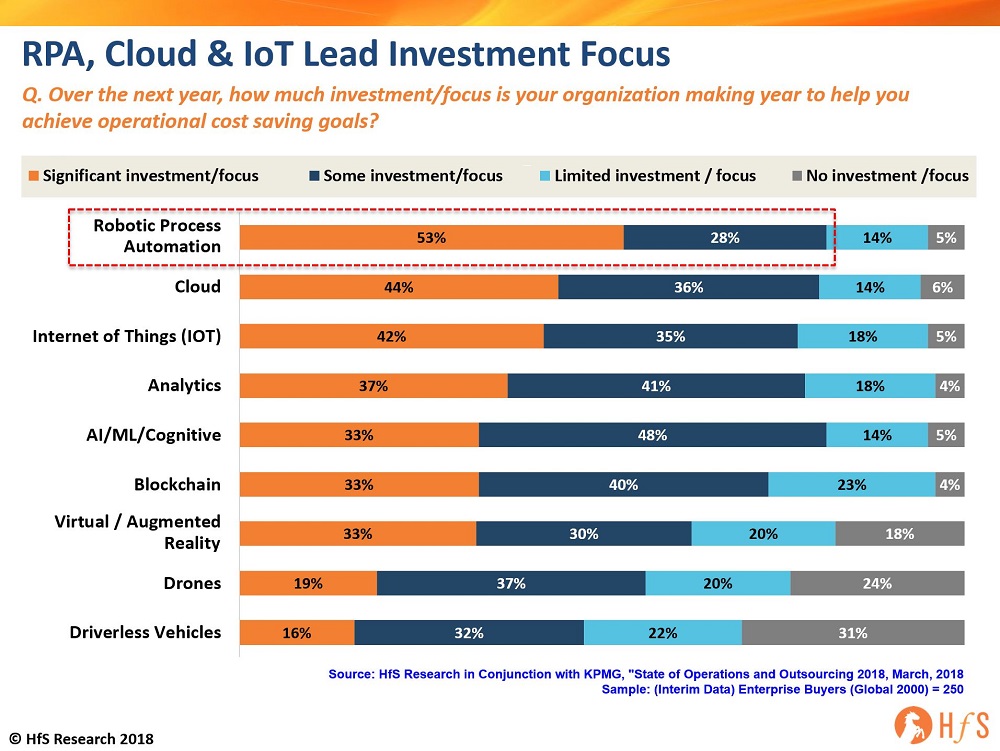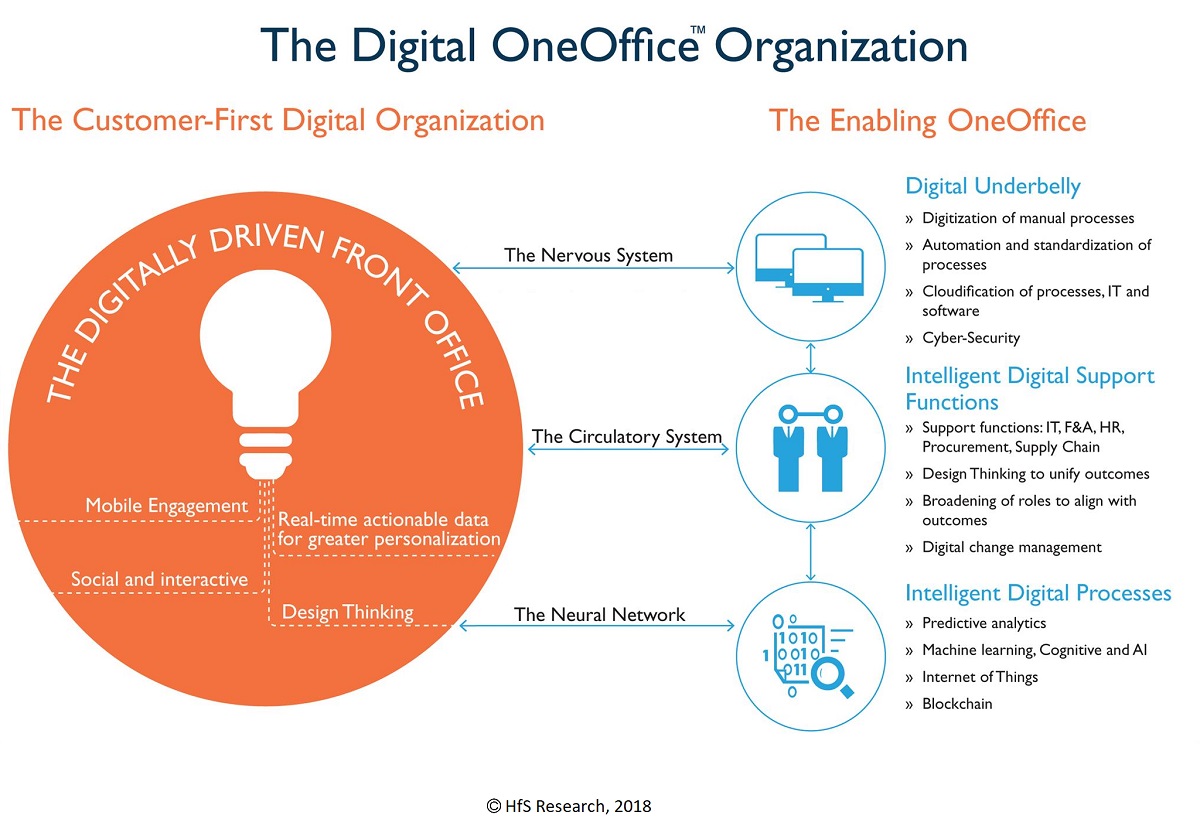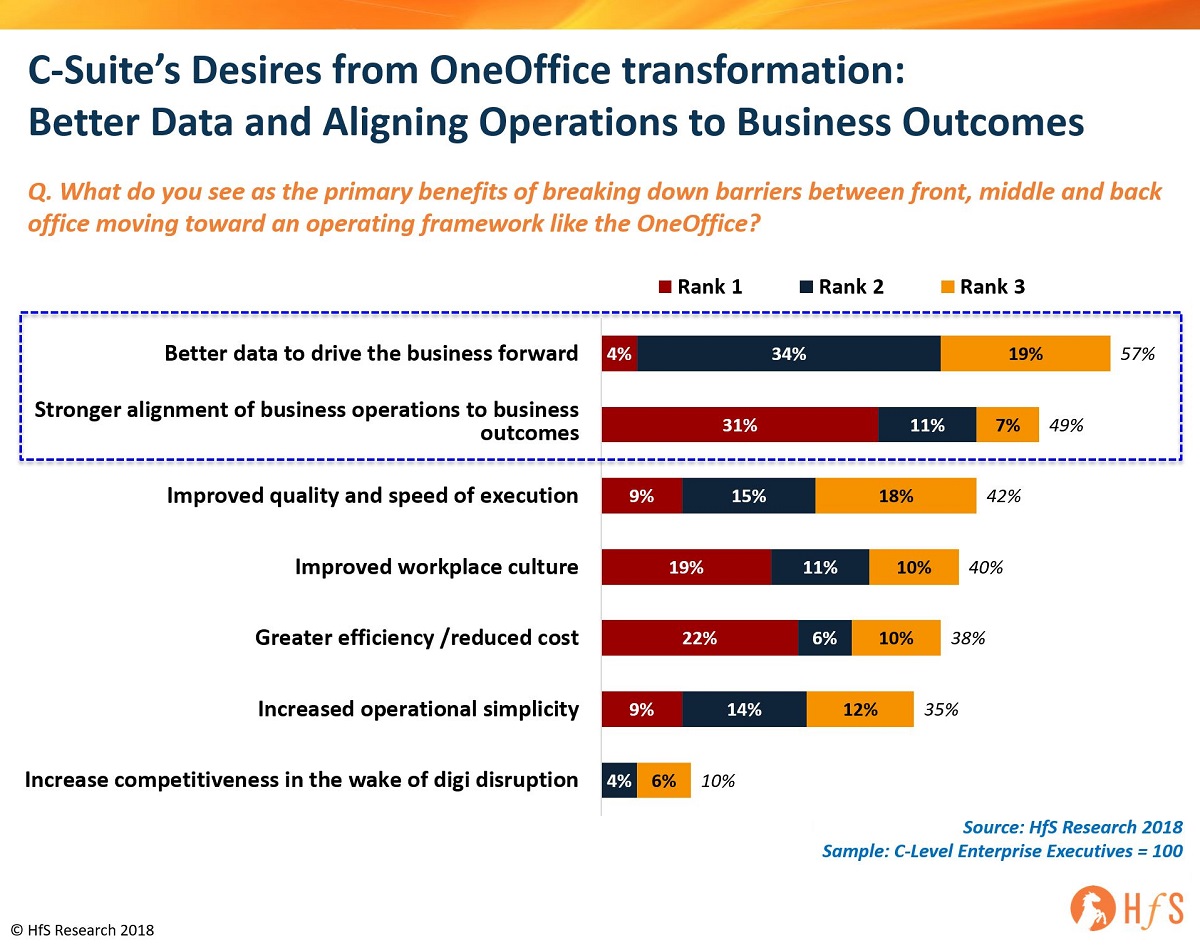
The biggest issue with most companies, when it comes to planning their operations, is that most do not have an ideal endstate in mind. They struggle to define success beyond finding some shiny new activity that will get them from where they are today to a state of greater productivity and/or lower operating cost. However, our new research with 100 C Suite execs reveals that their real goals are to get better data to drive their businesses forward while aligning their operations to their business goals. Technology solutions are enablers to achieve these goals, they provide a means, but they do not provide the outcome, which is where so many enterprises are going wrong these days.
Without a defined OneOffice endstate, automation strategies will always run out of steam
Even with offshore outsourcing, the endstate was rarely defined – it was simply to meet the next set of metrics before figuring out the “what’s next”. Were companies really envisaging running their operations in a similar way as before, merely with lower cost resources and some standardization of processes? But at least outsourcing was relatively predictable – it was defining how much work to move to the service provider and how many staff were needed to keep the operation ticking along to meet a desired set of metrics. With automation, entirely new metrics are in play, and it’s currently a random crapshoot how most companies are dealing with this. From manhours per year eliminated, to processing time reductions, to actual headcounts being removed, and even improvements in compliance and data accuracy, the “new metrics” that enterprises are toying with to find that next piece of “success” are becoming foggier than ever to decipher… and trust. And if you can’t trust the metrics, the whole thing starts to fall apart.
The reality is, once certain productivity measures have been achieved, the focus from the C-Suite quickly shifts to the next set of initiatives to achieve an entirely new level of productivity metrics. This is why the emergence of automation has been so significant – it is providing that next stage of productivity improvement that C-Suites are craving, and why RPA is now the leading investment focus to reduce costs in 2018 among Global 2000 firms:
The end-game is about getting better data and aligning operations with the business goals. The end-game is OneOffice, where front, middle and back offices will cease to exist
Emerging technologies like automation and ML are not the “end”, they are just a “means” to get us from one state to the next. Enterprises need to define what is their real endgame, otherwise they are stuck in a perennial loop of finding short-term fixes and losing focus. This is why we have developed the Digital OneOffice Framework, where the organization’s people, intelligence, processes and infrastructure come together as one integrated unit, with one set of unified business outcomes tied to exceeding customer expectations. OneOffice is where teams function autonomously across front, middle and back office functions to promote broader processes with real-time data flows that support rapid decision making, based on meeting these defined outcomes. Hence, emerging technologies like automation and AI are significant enablers in helping enterprises meet their ultimate goals, where front, middle and back offices will cease to exist: They will be, simply, OneOffice:
In a new study we are soon releasing that tests the OneOffice endstate with 100 C-Suite executives, we asked them about the primary benefits of breaking down internal silos between front, middle and back offices – i.e. making them think more about what their real end-game is versus merely how to dig out more cost. And it’s not really all about cost, it’s much more about getting the data they need to stay ahead of the game and to align their operations with the front end of the business. In short, the endstate if about simplifying the business around the needs of the customer and having the data to stay ahead of the competition:
The Bottom-line: Without a defined OneOffice endstate in mind, enterprises are forever meandering from one silver bullet to the next, where the only metric of success is eking out further reductions in headcount to keep their operations functioning
The real key is to define where you want to be, and create a path to get there. In most cases, this endstate is all about enterprises becoming conduits of the data they need to satisfy their customers’ needs in realtime, with a team of smart people who know how to manage these data flows and make smart decisions to keep ahead of the competition. The broader processes become between the customer and the enabling operations, the faster companies can satisfy their needs, and stay ahead of the game. The future is all about simplifying data complexity and having talent that can make creative and intelligent decisions, based on the availability of this data and understanding the customer. This is the very essence of OneOffice – simplifying data flows, bringing the customer and the operation together and aligning your talent with achieving defined outcomes that keep you ahead of your competition.
Posted in : OneOffice, Robotic Process Automation









One of the key requirement from C-Execs is to be able to trust the capabilities of Automation to drive relevant data points for them to process and then decision on them. While it is true that having an end goal of OneOffice is something that should drive C-Execs. How do you think the perennial challenge of having the trust on the quality of the data produced by automation can be relevant to the C-execs?
@Michael – You hit on the most critical point of all in everything that’s going on in our industry – quality of data. You can’t deliver any true value with automation until you ensure the underlying datasets are converged and integrated effectively with the tools. Remember, something like RPA is merely a tool to take data from one place to a more coverged place to support decision making. This is why more and more firms are appointing a Chief Data Officer to look at the underlying data solos, ensuring the right data is being collected and made available to the right tools to support the executives needing real time insight into their business operations and their customer dynamics. In short, you need to do MDM before you can RPA!
PF